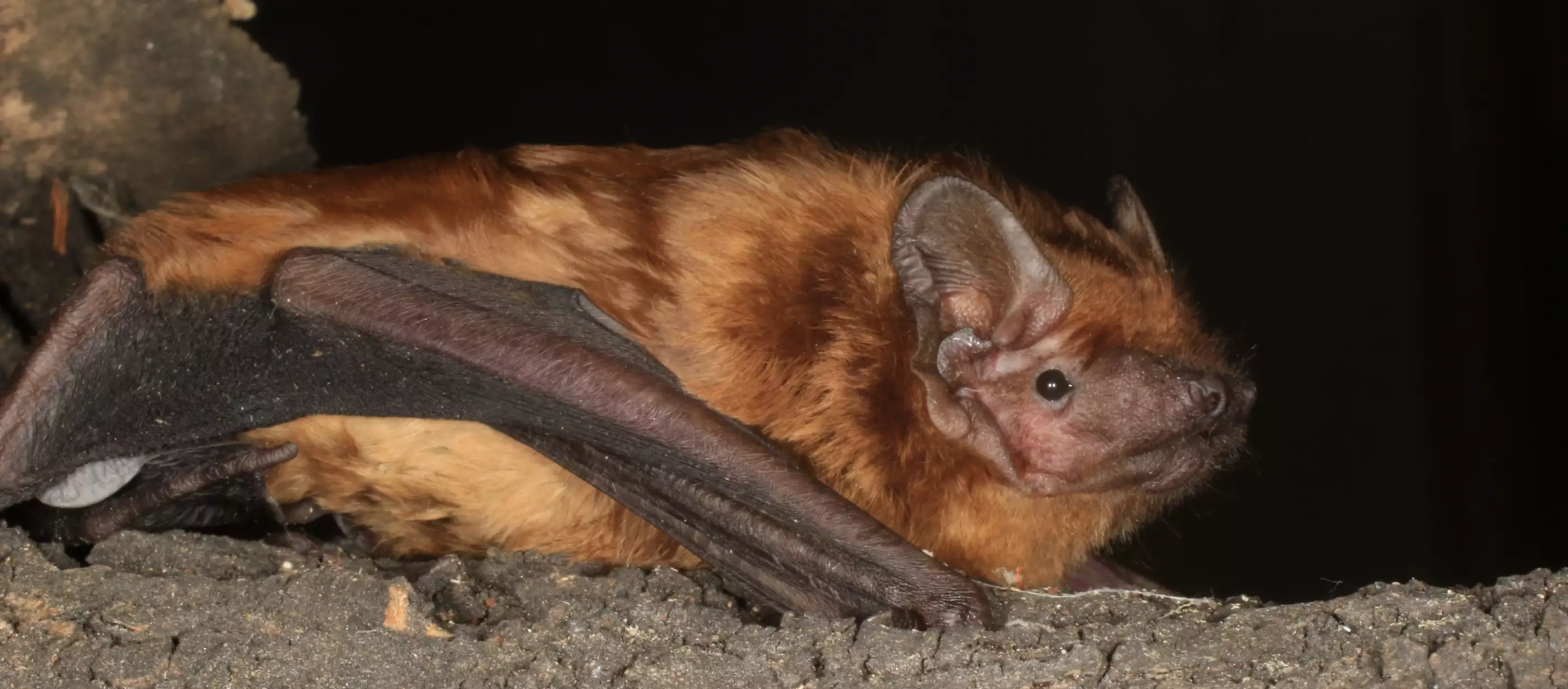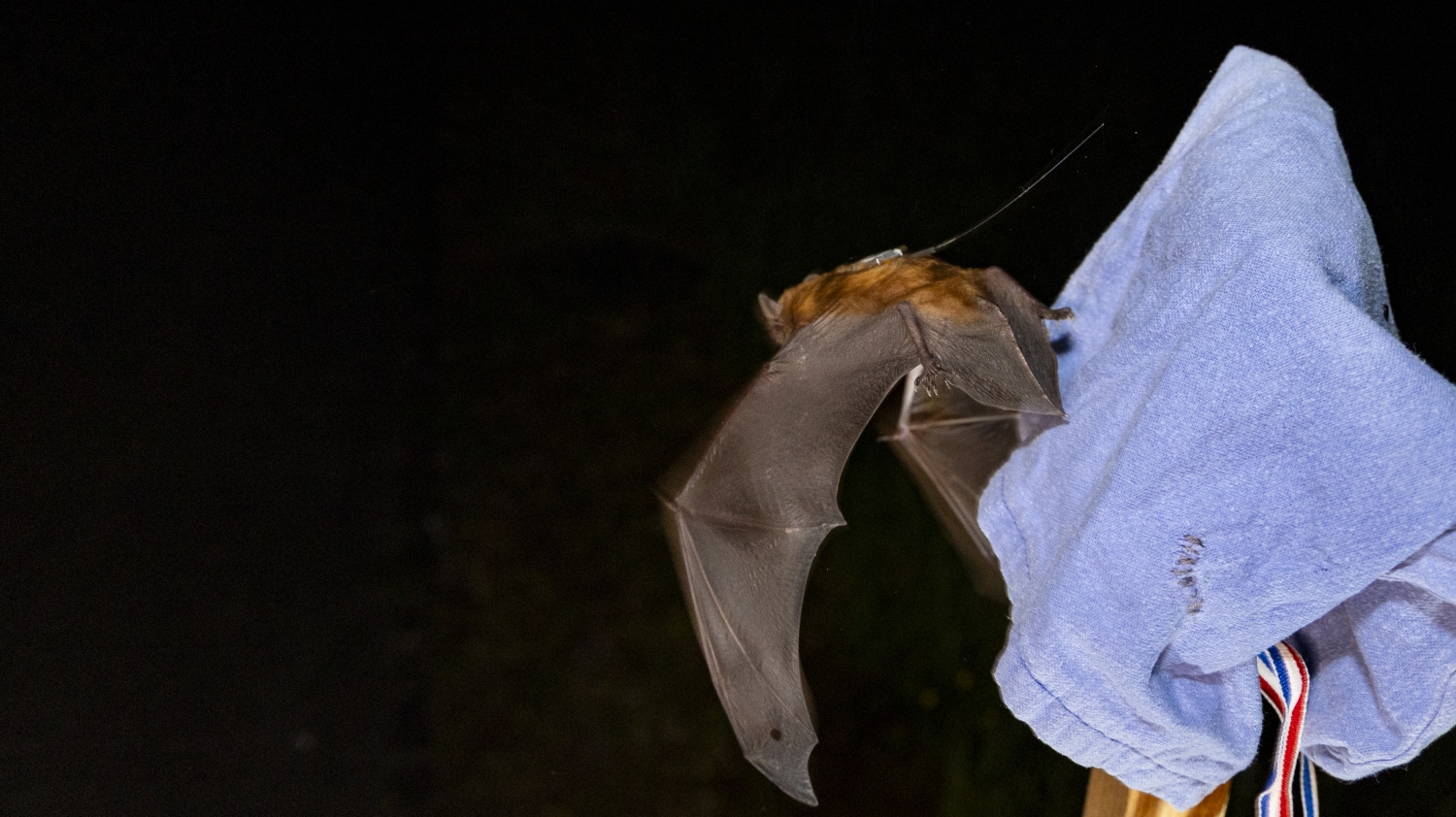Bats surf storm fronts during continental migration

Birds are the undisputed champions of epic travel—but they are not the only long-haul fliers. A handful of bats are known to travel thousands of kilometers in continental migrations across North America, Europe, and Africa. The behavior is rare and difficult to observe, which is why long-distance bat migration has remained an enigma. Now, scientists from the Max Planck Institute of Animal Behavior have studied 71 common noctule bats on their spring migration across the European continent, providing a leap in understanding this mysterious behavior. Ultra-lightweight, intelligent sensors attached to bats uncovered a strategy used by the tiny mammals for travel: they surf the warm fronts of storms to fly further with less energy.
“The sensor data are amazing! We don’t just see the path that bats took, we also see what they experienced in the environment as they migrated. It’s this context that gives us insight into the crucial decisions that bats made during their costly and dangerous journeys.”
Edward Hurme
Using novel sensor technology, the study examined a portion of the total migration of noctules, which scientists estimate to be around 1600-kilometers. “We are still far from observing the complete yearly cycle of long-distance bat migration,” says Hurme, a postdoctoral researcher at the Max Planck Institute of Animal Behavior and the Cluster of Excellence Collective Behaviour at the University of Konstanz. “The behavior is still a black box, but at least we have a tool that has shed some light.”
The study’s tracking device was developed by engineers at the Max Planck Institute of Animal Behavior. Weighing only five percent of the bat’s total body mass, the tiny tag includes multiple sensors that recorded activity levels of bats and temperature of the surrounding air. Normally, scientists would need to find tagged animals and be close enough to download such detailed data. But the study’s tag compressed the data, totaling 1440 daily sensor measurements, into a 12-byte message that was transmitted via a novel long-range network. “The tags communicate with us from wherever the bats are because they have coverage across Europe much like a cell phone network,” says senior author Timm Wild, who led the development of the Icarus-TinyFoxBatt tag in his Animal-borne Sensor Networks group at the Max Planck Institute.
The team deployed the tags on common noctules, a bat that is wide-spread in Europe and one of only four bat species known to migrate across the continent. Every spring for three years, the scientists attached tags on common noctules in Switzerland, focusing exclusively on females which are more migratory than males. Females spend summers in northern Europe and winters in a range of southerly locations where they hibernate until spring.
© Max Planck Institute of Animal Behavior / Christian ZieglerTags remained on common noctules for up to four weeks, after which they fell off.
The tags collected data for up to four weeks as the female noctules migrated back northeast, revealing trajectories far more variable than previously thought. “There is no migration corridor,” says senior author Dina Dechmann from the Max Planck Institute of Animal Behavior. “We had assumed that bats were following a unified path, but we now see they are moving all over the landscape in a general northeast direction.”
The scientists teased apart the data to distinguish hour-long feeding flights from the much longer migratory flights, finding that noctules can migrate almost 400 kilometers in a single night—breaking the known record for the species. Bats alternated their migratory flights with frequent stops, likely because they needed to feed continuously. “Unlike migratory birds, bats don’t gain weight in preparation for migration,” says Dechmann. “They need to refuel every night, so their migration has a hopping pattern rather than a straight shot.”
The authors then detected a striking pattern. “On certain nights, we saw an explosion of departures that looked like bat fireworks,” says Hurme. “We needed to figure out what all these bats were responding to on those particular nights.” They found that these migration waves could be explained by changes in weather. Bats left on nights when air pressure dropped and temperature spiked; in other words, the bats left before incoming storms. “They were riding storm fronts, using the support of warm tailwinds,” says Hurme.
The tag’s sensors that measured activity levels further showed that bats used less energy flying on these nights of warm wind, confirming that the tiny mammals were harvesting invisible energy from the environment to power their continental flights. “It was known that birds use wind support during migration, and now we see that bats do too,” he adds.
© Hurme et al. Science 2025Bat movement over three days shows how many individuals departed on a night of lower air pressure (center).
The implications of these findings go beyond biological insight into this understudied behavior. Migratory bats are threatened by human activity, in particular wind turbines which are the cause of frequent collisions. Knowing where bats will be migrating, and when, could help to prevent deaths.
“Before this study, we didn’t know what triggered bats to start migrating. More studies like this will pave the way for a system to forecast bat migration. We can be stewards of bats, helping wind farms to turn off their turbines on nights when bats are streaming through.”
Edward Hurme


